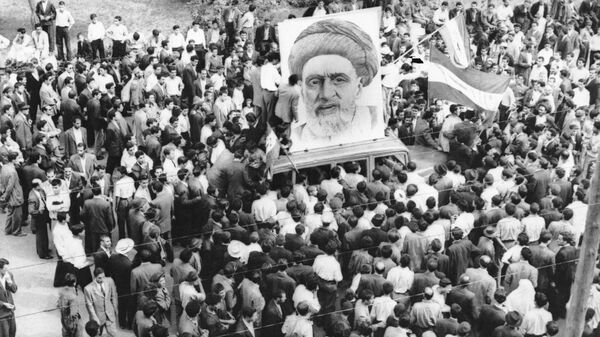The United States ambassador to Iran wrongly claimed to the Shah that Queen Elizabeth II supported the plan to topple the elected prime minister of the country in 1953, according to a Warwick historian.
According to Richard Aldrich, a professor at the University of Warwick whose research will be featured in a Channel 4 documentary title 'The Queen and the Coup' on Sunday, the US kept to the story that the newly crowned monarch backed the coup even after they were aware of the mistake.
"There's an acceptance that you're never going to have the whole story", Professor Aldrich said, according to the Associated Press.
"You're on a journey to try and achieve a better history, but you're never going to have the complete story", he added.
In 1953, the United States would successfully overthrow the democratically elected Iranian leader, Mohammad Mosaddegh, who supported the nationalisation of UK-controlled oil in the country.
The British looked to US President Eisenhower, whose interests aligned in his global quest to combat the spread of communism and the Soviet Union.
Papers released by the US reveal that the intelligence services “stockpiled enough arms and demolition material to support a 10,000-man guerrilla organization for six months” and had paid $5.3 million in bribes and other costs - equivalent to $48 million today.
One CIA document casually acknowledges that “several leading members of these (Iranian) security services are paid agents of this organization".
The coup faced several problems including the Young Reza Shah himself. Diplomats and spies described the soon-to-be absolute monarch as a “weak reed” and “petulant", and the CIA dismissively referred to him as the “Boy Scout,” according to Aldrich.
Some history based on govt docs: In 2014, CIA further declassified (in response to a mandatory declassification review by @NSArchive) one of CIA's few history papers known to exist about the agency's role in the 1953 coup in Iran titled The Battle for Iranhttps://t.co/orM3w2cSg1 pic.twitter.com/Mn5IK4dqBd
— Jason Leopold (@JasonLeopold) January 6, 2020
Growing fearful of Mosaddegh's growing power, the Shah planned to flee Iran in February 1953, just months prior to the coup. US Ambassador Loy W. Henderson attempted to intervene and rushed to the palace only to find Hosein Ala, the Shah's court minister, who rang the monarch from his residence.
“I had just received a message indicating that very important personage for whom shah had most friendly feelings had also expressed sincere hope that shah could be dissuaded from leaving country", Henderson wrote, the Channel 4 documentary and a later diplomatic cable revealed.
That cable, which was unveiled among other US State Department's papers in 2017, included a footnote referencing another one sent to the US Embassy in London.
“Foreign Office this afternoon informed us of receipt message from (Foreign Minister Anthony) Eden from Queen Elizabeth expressing concern at latest developments re shah and strong hope we can find some means of dissuading him from leaving country”, the footnote reads.
This revelation seemed to show a direct message from the Queen of the United Kingdom herself. However, the foreign minister was in fact aboard the ship named RMS Queen Elizabeth on a trip to Canada, which is what the officials in London meant to say.
“Queen Elizabeth refers, of course to vessel and not ... to monarch", they wrote, despite Henderson already having spoken to the Shah at that point.
The message likely helped persuade the Shah to stay in Iran. Prof. Aldrich said that he believes the 1953 coup may not have happened if he had decided to flee then.
"At this point, there’s no doubt that he’s packed his bags and was pretty much going to the airport when this intervention happened", Aldrich said.
Making History
The US has released several documents acknowledging the CIA's role in building up the coup, yet historians still struggle to find precise documents from the intelligence agencies surrounding the events.
Following the overthrow of democracy in Iran, the Shah was reinstated and ruled through dictatorial powers and torture, ultimately culminating in the Iranian revolution in 1979 and the founding of the Islamic Republic of Iran.
The coup still defines US-Iran relations today, as the Islamic Republic considers the event to be the genesis of US aggression towards the country.


